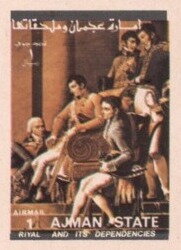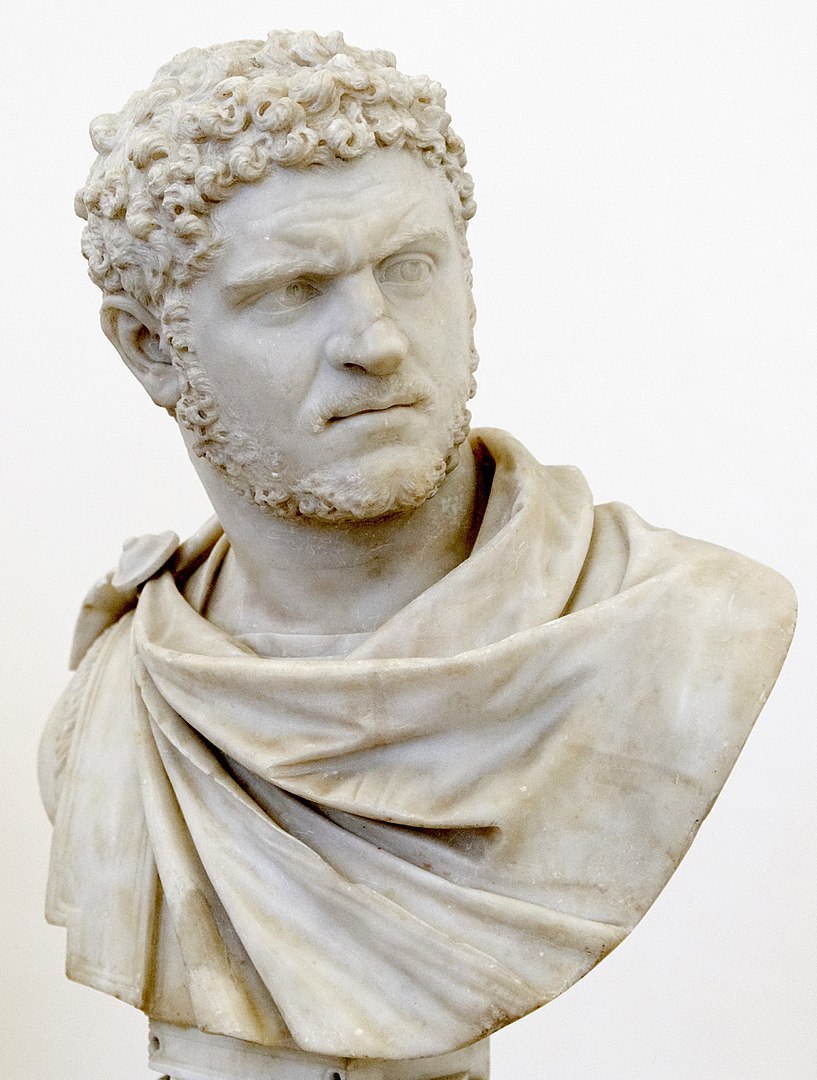Stamp: Napoleon (Ajman 1973)
Napoleon (Ajman 1973)
31 March (Ajman ) within release Personalities, large format goes into circulation Stamp Napoleon face value 1 United Arab Emirates riyal
| Stamp Napoleon in catalogues | |
|---|---|
| Michel: | Mi: AJ 2900B |
| Colnect codes: | Col: AJ 1973.03.31-46h |
Stamp is vertical format.
The Concil of the Cisalpine Republic, united for an electoral meeting in Lyon on 26 January 1802, proclaims the fist Consul Napoleon Bonaparte (1769-1821) (right sitting on the stage) their President. Painting by Nicolas Monsiau (1754-1837), 1808. 3,19 x 4,83 m. Chateau de Versailles, FranceAlso in the issue Personalities, large format:
- Stamp - Queen Elizabeth II and Prince Philip face value 1;
- Stamp - General Maréchal Pétain face value 1;
- Stamp - Napoleon face value 1;
- Stamp - Joseph Joffre Marshal of France (Rivesaltes 1852-Paris 1931) face value 1;
- Stamp - Napoleon and the farewells of Fontainebleau, April 20, 1814 face value 1;
- Stamp - Georges Clemenceau face value 1;
- Stamp - Charles de Gaulle face value 1;
- Stamp - General Charles de Gaulle face value 1;
- Stamp - Napoleon face value 1;
- Stamp - Charles de Gaulle face value 1;
- Stamp - Marshal Ferdinand Foch face value 1;
- Stamp - Marshal Ferdinand Foch face value 1;
- Souvenir Sheet - General Charles de Gaulle face value 1;
- Stamp - Charles de Gaulle face value 1;
- Stamp - Charles de Gaulle face value 1;
- Stamp - General Charles de Gaulle face value 1;
- Stamp - General Charles de Gaulle face value 1;
- Stamp - General Maréchal Pétain face value 1;
- Stamp - Georges Clemenceau face value 1;
- Stamp - John F. Kennedy (1917-1963) face value 1;
- Stamp - Joseph Joffre Marshal of France (Rivesaltes 1852-Paris 1931) face value 1;
- Stamp - Marshal Ferdinand Foch face value 1;
- Stamp - Napoleon face value 1;
- Stamp - Napoleon face value 1;
- Stamp - Napoleon face value 1;
- Stamp - Napoleon and the farewells of Fontainebleau, April 20, 1814 face value 1;
- Mini Sheet - Personalities, large format face value 16*1;
- Stamp - Queen Elizabeth II and Prince Philip face value 1;
- Stamp - Sir Winston Spencer Churchill face value 1;
- Stamp - Tschou Enlai and President Nixon face value 1;
Stamp Napoleon it reflects the thematic directions:
The word emperor (from Latin: imperator, via Old French: empereor) can mean the male ruler of an empire. Empress, the female equivalent, may indicate an emperor's wife (empress consort), mother/grandmother (empress dowager/grand empress dowager), or a woman who rules in her own right and name (empress regnant or suo jure). Emperors are generally recognized to be of the highest monarchic honour and rank, surpassing king. In Europe, the title of Emperor has been used since the Middle Ages, considered in those times equal or almost equal in dignity to that of Pope due to the latter's position as visible head of the Church and spiritual leader of the Catholic part of Western Europe. The emperor of Japan is the only currently reigning monarch whose title is translated into English as "Emperor"
Famous People refers to the fame and public attention accorded by the mass media to individuals or groups or, occasionally, animals, but is usually applied to the persons or groups of people (celebrity couples, families, etc.) themselves who receive such a status of fame and attention. Celebrity status is often associated with wealth (commonly referred to as fame and fortune), while fame often provides opportunities to make money.
A head of state (or chief of state) is the public persona that officially represents the national unity and legitimacy of a sovereign state. In some countries, the head of state is a ceremonial figurehead with limited or no executive power, while in others, the head of state is also the head of government. In countries with parliamentary governments, the head of state is typically a ceremonial figurehead that does not actually guide day-to-day government activities and may not be empowered to exercise any kind of secular political authority (e.g., Queen Elizabeth II as Head of the Commonwealth). In countries where the head of state is also the head of government, the president serves as both a public figurehead and the actual highest ranking political leader who oversees the executive branch (e.g., the President of the United States).



